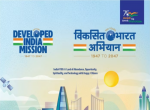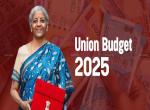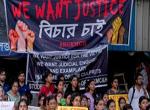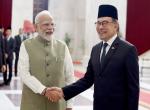George Orwell wrote a seminal work of fiction bearing the title 1984. Because it foretold a world controlled by a faceless dictatorship which had total electronic surveillance of every citizen, it caused horror and consternation. I suppose it is Stalin’s total dictatorship in the Soviet Union which inspired 1984.
Perhaps no one would be happier than I that the countervailing liberal forces prevented the world from going totally into the 1984 scenario. Of course there have been regimes which have come close to it, Myanmar being one of them. It is Orwell’s work which has inspired the title of the present essay.
The experience of this country ever since we moved from a government of a single party enjoying a majority to an era of coalitions has not been altogether happy. Atal Bihari Vajpayee led the National Democratic Alliance (NDA) coalition in which the largest single party was the BJP, with approximately 185 seats in the Lok Sabha. The constituent members of the coalition quite often acted in an irresponsible manner and demanded from the Prime Minister concessions which no normal government could afford. There were a number of compromises, but Atalji had diplomatic skills whereby he was able to manage the coalition reasonably well. The stresses and tensions were visible, but the structure was held together by the personality of the Prime Minister. When that coalition was replaced by the United Progressive Alliance (UPA) in 2004 the largest single unit was the Congress and Dr. Manmohan Singh became the Prime Minister, though with real political power resting with Sonia Gandhi, Congress President and Chairman of UPA and of the National Advisory Council (NAC). Power was split and this did not go unnoticed by the alliance partners. Fortunately for Dr. Manmohan Singh the Left had a substantial presence in Parliament and by and large it played a responsible, nationalist and public welfare oriented role which ensured that in all matters of public interest government had a solid bloc supporting it. The Left walked away from the coalition (it has always supported the coalition without being a member of it) over the Indo-U.S. Nuclear Agreement, but it still continued to play a responsible role in Parliament and this helped government.
The 2009 scenario was very different. BJP was reduced to 114 seats in the Lok Sabha and even with its ally, Shiv Sena, the figure did not exceed 125. Old allies such as the Biju Janata Dal and the Telugu Desham Party walked away from NDA, though the Janata Dal (United) and the Shiromani Akali Dal held true to NDA. The Congress’s strength rose to 207, which is a fairly comfortable figure in the matter of leading a coalition. However, the Left was dealt a severe blow in the election and, therefore, it was no longer a pillar to which the Congress could cling in a storm. The other motley collection of parties which allied with the Congress have small numbers only, with the largest groups being Bahujan Samaj Party and the Samajwadi Party with 21 seats each and the Trinamool Congress and the DMK with 19 and 18 seats respectively. By and large the Samajwadi Party remained busy with U.P. affairs, as did the Bahujan Samaj Party and did not interfere much with the working of the Central Government. However, parties such as the Trinamool Congress, the DMK and the NCP exerted pressures on government totally out of proportion with their strength in Parliament, resulting in a virtual paralysis in almost every major matter of policy. Whether it was the Teesta water accord with Bangladesh, petroleum prices, the railway budget, the handling of issues relating to telecommunications, the measures to counter terrorism, various Bills of the Human Resource Development Ministry for education reforms, food security or measures to stop corruption, in every case government’s proposals were thwarted by various splinter groups and government has had to compromise in every case. Cumulatively this has resulted in a major damage to the national psyche in the matter of economic reforms, prevention of corruption, dealing with Naxalism, policy relating to land acquisition, environmental protection and wild life protection, the implementation of development programmes and the adoption of the same educational policy. Externally it has projected a picture of a corrupt India in which government was unable to undertake economic reforms and this has led to a drop of confidence of foreign investors in India. The Indian rupee has dropped to an all-time low, industrial production is stagnating, employment generation is not taking place and there is a general feeling throughout the world that the Indian economy is in crisis which government does not have the will or ability to handle. Whereas two years ago the Indian rupee was strong, the economy was thriving and the world considered India a role model of economic management, today we are down in the dumps. A stagnant economy is facing a staggering inflation and things are beginning to look really bad for this country.
What does India need? Obviously first and foremost we need a government which has confidence in itself and has the strength in Parliament to be able to push through sane policies without the fear that the government will fall because of the unreasonable demands of small parties allied to it. Therefore, in the next elections it is very important that the two major parties, the BJP and the Congress, restructure themselves so that when they go before the electorate both have an even chance of either getting a majority or to at least secure 225 seats in the Lok Sabha. With that number of seats a coalition could probably be fairly easy to handle because the smaller partners would know that if they walk out the government will still survive because of the support of about fifty other Members of Parliament. In other words, we should try and ensure that in 2014 there is an absolute majority for a party, or that one of the two major parties wins at least 225 seats in Parliament.
Suppose the election results in the two major parties, the Congress and the BJP winning less than 150 seats each in the Lok Sabha. Both are equally balanced, neither has the numbers whereby it can not claim power, nor is there a certainty that in a so divided a mandate at least 125 members will come together to help one of the two major parties to form a coalition government. In Britain the Conservatives and the Liberal Democrats have a coalition, with neither party dominating and there is an agreed programme for governance which, by and large, has been followed. Therefore, despite being a coalition the British Government works. In India if the myriad coalition partners have almost the same number of seats as the lead partner in the coalition, the coalition will not function because each partner would demand its pound of flesh. The partners would be like a school of piranhas and would feed on the body of the largest single partner in the coalition. Whether it is the BJP or the Congress neither would be able to survive a coalition of this nature. Damn the parties, the question is, would India survive?
Another scenario is that the two major parties are evenly balanced but do not have that number of seats which would enable either to put together a viable coalition. Under these circumstances whom does the President invite to become Prime Minister if the leaders of both political parties say that they cannot put together a government? The President would still have to invite somebody because according to the Constitution the Centre does not have the power to declare President’s rule, which the President has vis-à-vis the States through Article 356. The person invited forms a government, which immediately falls because it does not enjoy the confidence of the House. Suppose this happens to the next man also who is invited to become Prime Minister? The President will have to appoint a caretaker Prime Minister and then arrange for immediate elections. Suppose the next elections throw up similar results? Do we go through the same exercise once again? Can we really afford to hold an election every six months? A caretaker can neither take a policy decision, nor initiate legislation, nor launch any development programmes, nor take decisions on issues of policy, nor undertake major diplomatic exercises. Can such a government, reminiscent of the Fourth Republic in France, offer leadership to this country or run a meaningful government?
In the national executive meeting of the BJP held in Mumbai recently Shri L.K. Advani made a statement and asked a question, the true depth of which has not been appreciated. He said that people are unhappy with UPA, but BJP should ask itself the question whether if UPA goes does it have the capacity to form and lead the government. What Advaniji was stating is that if BJP or any other party forms a government it must have the capacity to do so, a clear-cut agenda for tackling the problems of the country and a programme whereby political stability is restored. I consider Advaniji’s comment to be of supreme importance because the time has come for political parties to do introspection about where this country is going and what would happen to it because of fragmented politics.
A party based democracy demands the existence of strong political parties. Ideally India needs a middle of the road party, which is a role that Congress should play. This party would have elements of the socialists also. Then there should be a Left leaning party, but which excludes and in fact suppresses the extreme Left, which includes Naxalism. There should also be a right of centre party in which BJP should shed its communal baggage and win recognition as a secular party. This right leaning party would exclude and suppress all forms of Right extreme. The three parties mentioned above would have a narrow margin within which to swing left or right and there would also be continuity in government. That is the need of the hour. In order to ensure this we would have to bring about a massive strengthening of the Congress – Socialist group, the Left Front and the BJP. How is this to happen? Our experience of coalitions has been that smaller regional parties with narrow interests and independents with selfish interests are the two main obstacles to the coalescing of parties. Therefore, we need to bring about the following reforms:-
- No independent should be qualified to fight an election to a State Legislature unless he has successfully contested a local government election, panchayat or municipality. An independent should be precluded from contesting a parliamentary election unless he has won at least one local government and one State Legislature election. This would eliminate all the self-seeking independents and to that extent the parties would be strengthened.
- No political party should be allowed to stand for a parliamentary election unless it has at least five seats each in the State Legislatures of at least three States. This would force the regional parties to develop a wider perspective beyond their own State and thus break away from the narrow tunnel vision imposed by their own immediate region. Conversely the smaller parties could merge into the larger ones, thus strengthening the nationwide party system. In either case they would no longer be able to call the shots in Parliament and thus give a fair chance to the ruling party or coalition to go about the business of the government.
It is about time our political parties did deep introspection on where this country is going because of their own selfish interest and political shenanigans. Otherwise 2014 stares us in the face as the annus horribilis in which the political system collapses in India.
Published Date: 29th May 2012









Post new comment